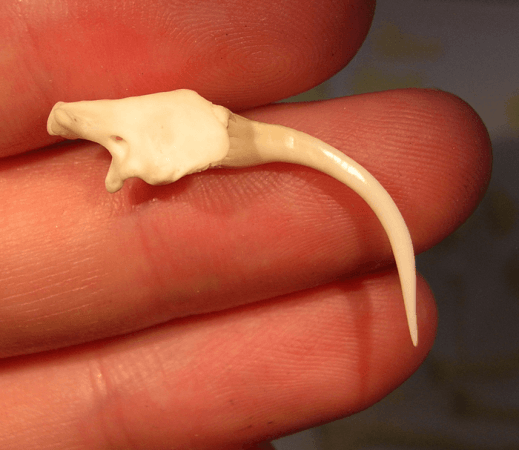There are several features of snakes that are both striking and fear-inducing. Their fangs are one of them. However, not all reptiles possess these lethal pointed teeth. This raises a very important question—How did venom fangs evolve in deadly snakes? Scientists have now found that specific microscopic features in their teeth hold the key to the evolution of venom fangs.
The multi-institutional study discovered that wrinkles, or tiny infoldings, known as plicidentine at the base of snakes' teeth, played a crucial role in the evolution of their fangs. In poisonous snakes, these wrinkles become deeper and extend all the way to the tip of the tooth, thereby, creating a venom groove and a fang. The study also found that venom fangs evolved convergently in several species of modern snakes.
"It's always been a mystery why fangs have evolved so many times in snakes, but rarely in other reptiles. Our study answers this, showing how easy it is for normal snake teeth to turn into hypodermic needles," said Dr. Alessandro Palci, lead author of the study, in a statement.
Marvelous Result of Evolution

Snakes find a place among the group of vertebrates that are considered highly successful. They are of great significance to scientific research, particularly due to the factors that enabled their evolutionary success. Over 4,000 species of snakes exist currently. Of these, around 600 species are regarded as 'medically significant' to humans. It means that being bitten by one of them would most definitely require medical treatment or hospitalization.
So what are venom fangs? They are altered teeth that are visibly larger than surrounding teeth and are grooved. They can be located at the front or the back of the mouth. While venom fangs are fixed sometimes, they can also be hinged (i.e) they are capable of folding backwards. "A snake's venom fang is an iconic example because it's a tooth that's been modified into a venom-injecting syringe," noted Dr. Aaron LeBlanc, co-author of the study.
Repurposing 'Wrinkles' for Venom

For the research, the authors utilized high-resolution computed tomography (microCT), biomechanical modelling, fossils and extensive microscopic observations. They found that plicidentine, a form of dentine, played a crucial role in the development of fangs. Dentine is the bony tissue that forms the bulk of the teeth. Plicidentine, infoldings at the base of the teeth, is common among snakes and is crucial in understanding how snakes have been able to continuously evolve their fangs.

Through their examination, the team learnt that in venomous snakes, one of these infoldings was adapted to create a longitudinal (running lengthwise) groove or tube for the delivery of venom. "Our closer look into the development and evolution of snake teeth tells us how this might have happened through gradual, piecemeal changes. It reveals how mutations and subtle changes in tooth shape and size can slowly modify a tooth from a grasping and puncturing structure into a new tooth type that injects venom," explained Dr. LeBlanc.
Convergent Evolution Among Modern Snakes

Another important finding of the study was that not all venomous snakes followed the same evolutionary route to develop venom fangs. According to the authors, these fangs evolved separately in species of modern snakes such as cobras and vipers. While their teeth shared several common characteristics, they evolved independently.
"This research provides a textbook example of convergent evolution, in which two or more lineages with a common ancestor tweak that ancestral body plan in similar ways independently to adapt to a similar challenge. So we end up with vipers and cobras, two snake lineages separated by about 40 million years, that both evolve large fangs at the front of their mouth," highlighted Dr. Palci.









